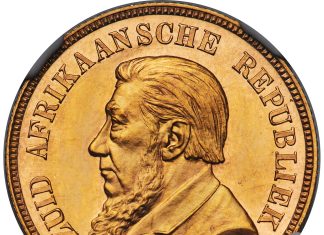Gold not only ended higher on Wednesday, but closed up on the year for an eighth consecutive time. Surging oil prices and a weakened U.S. dollar supported the yellow metal’s move. New York silver, gold and platinum futures gained 2.9 percent, 1.6 percent and 2.6 percent, respectively.
 February crude-oil surged $5.03, or 12.9 percent, to close to $44.06 a barrel. However, oil moved down 54 percent for the year, and finished more than $100 lower from its record $147.27 a barrel on July 11.
February crude-oil surged $5.03, or 12.9 percent, to close to $44.06 a barrel. However, oil moved down 54 percent for the year, and finished more than $100 lower from its record $147.27 a barrel on July 11.
The average price for regular unleaded gasoline rose one-tenth of a penny to $1.617 a gallon, according to AAA. The average price one year ago was $3.043 a gallon.
March silver gained 31.5 cents to close at $11.295 an ounce.
January platinum rose $23.50 to end at $941.50 an ounce.
Gold for February climbed $14.30 to settle at $884.30 an ounce.
Senior analyst Jon Nadler at Kitco Bullion Dealers provides projections for gold prices in 2009:
"The trading range will likely remain as wide as this year’s $350 while volatility will remain an integral part of daily, weekly, and monthly swings. Prices might touch $630 on the low side and $980 on the high side – however, factor in some imponderables (severe deflation and/or catastrophic geopolitical developments) and one could augment either end of the scale by $100. Barring the latter, the average gold price will likely register near $810 per ounce, following its $871 average for the current year."
Gold, considered a hedge during times of high inflation and economic uncertainty, tends to follow oil and move opposite to the U.S. dollar. A rising greenback makes dollar-denominated commodities, like bullion, more expensive for holders of other world currencies. When prices are falling and economic activities are shrinking, gold prices tend to move lower.
Check out CoinNews market resources at Live Bullion Spots, the Silver Coin Calculator, U.S. Mint Collector Bullion Coin Prices, and the Inflation Calculator.










